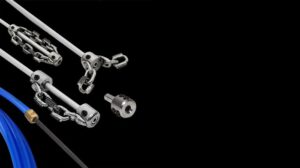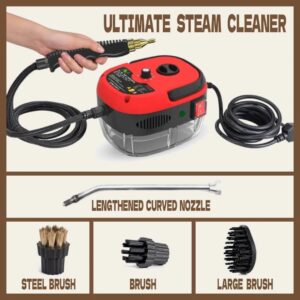
Best tools for dust removal, an essential aspect of maintaining a clean and healthy environment, ensures that both homes and workplaces remain dust-free. Dust accumulation can be more than just an aesthetic issue; it can lead to health problems and affect the efficiency of appliances. In this guide, we’ll delve into the world of dust removal, exploring the most effective manual and mechanical tools, as well as the latest innovative technologies that make cleaning more efficient.
From traditional brooms and dusters to advanced vacuum systems, understanding the best tools for dust removal can significantly enhance your cleaning routine. Not only will we compare various tools and their effectiveness in different settings, but we will also provide practical tips on proper usage and maintenance to maximize their longevity and performance.
Best Manual Dust Removal Tools

Manual dust removal tools offer a straightforward and effective way to keep your environment clean without relying on electricity or complicated machinery. They provide a hands-on approach to dusting that many find satisfying and efficient. However, while manual tools can be great for targeted cleaning, they also come with certain limitations like time consumption and physical effort.When it comes to manual dust removal, there are several tools that stand out for their effectiveness and ease of use.
Recognizing the right tools can enhance your cleaning routine and ensure that dust doesn’t accumulate in your home or workspace.
Advantages and Disadvantages of Manual Dust Removal Tools
Understanding the pros and cons of manual dust removal tools is essential for making informed choices.
- Advantages:
- Cost-Effective: Manual tools are generally less expensive than electric alternatives.
- Environmentally Friendly: They don’t require electricity, making them a greener choice.
- Control: Users have better control over the cleaning process, allowing for precision in hard-to-reach areas.
- No Maintenance: Unlike electric tools, manual tools have fewer parts to maintain or repair.
- Disadvantages:
- Physical Effort: Cleaning can be labor-intensive and time-consuming.
- Limited Reach: Some tools may not effectively reach every corner or surface.
- Less Efficient for Large Areas: Manual tools may not be practical for cleaning large spaces quickly.
Effective Manual Dust Removal Tools
Choosing the right manual dust removal tools can make a significant difference in your cleaning efforts. Here are some of the most effective options available:
- Dusters: Feather dusters and microfiber dusters are excellent for trapping dust on delicate surfaces and in hard-to-reach areas.
- Dust Mops: These are ideal for larger floor spaces, particularly hardwood or tile, and can be used dry or damp for superior dust collection.
- Cleaning Cloths: Microfiber and cotton cloths are highly effective for wiping surfaces clean without scratching, ideal for furniture and electronics.
- Handheld Brushes: Great for quick clean-ups, especially in tight spaces like keyboards and car interiors.
- Vacuum Dusting Attachments: While technically part of a vacuum cleaner, these attachments can be used manually to effectively clean surfaces without the bulk of a full vacuum.
Tips for Optimal Use of Manual Dust Removal Tools
To maximize the effectiveness of manual dust removal tools, consider the following tips:
- Always start dusting from the top down to ensure that any dust that falls settles on surfaces that will be cleaned later.
- Use the right tool for each surface; for instance, use microfiber cloths on electronics and feather dusters for delicate items.
- Regularly clean your dusters and cloths to ensure they remain effective. Wash microfiber cloths in a gentle detergent without fabric softeners.
- Utilize a light cleaning solution on cloths for added effectiveness on stubborn dust or grime.
- Keep a consistent cleaning schedule to prevent dust build-up and make the process quicker and easier each time.
Best Mechanical Dust Removal Tools

Mechanical dust removal tools are essential for maintaining cleanliness in various environments, from industrial settings to household spaces. These tools automate the dust removal process, ensuring efficiency and effectiveness in cleaning. Understanding the different types of mechanical dust removal tools and their specific applications can make a significant difference in how dust is managed.Mechanical dust removal tools come in various types, each designed for specific uses and environments.
Below is a breakdown of several popular types:
Types of Mechanical Dust Removal Tools and Their Uses
The selection of mechanical dust removal tools depends largely on the environment in which they will be used. Here are some of the most common types:
- Vacuum Cleaners: Widely used in homes and offices, vacuum cleaners use suction to remove dust from floors, carpets, and surfaces. Their versatility makes them suitable for various surfaces, including upholstery and hard floors.
- Dust Collectors: Primarily found in workshops and construction sites, dust collectors capture airborne dust particles generated during activities such as sanding or cutting. They are essential for maintaining air quality in industrial environments.
- Floor Scrubbers: Ideal for large spaces like warehouses or retail stores, floor scrubbers combine scrubbing and vacuuming functions to remove dust and debris, leaving floors clean and sanitized.
- Compressed Air Systems: Frequently used in garages and manufacturing facilities, these systems blow dust away from equipment and hard-to-reach areas, making them effective for machinery maintenance.
Efficiency of Mechanical Dust Removal Tools in Different Environments
Different mechanical dust removal tools exhibit varying efficiency levels based on their intended environments. The effectiveness of each type can be assessed as follows:
- Home and Office: Vacuum cleaners are generally the most efficient for residential and office settings due to their ability to handle various surfaces and their portability.
- Industrial Settings: Dust collectors are specifically designed to manage large volumes of dust and are more efficient in industrial settings, where dust generation is higher.
- Large Facilities: Floor scrubbers excel in large areas, combining dust removal with floor cleaning, making them ideal for retail environments.
- Workshops and Garages: Compressed air systems provide targeted cleaning and are effective for removing dust from intricate machinery and tools.
Maintenance Requirements for Mechanical Dust Removal Tools
Proper maintenance is crucial for ensuring the longevity and efficiency of mechanical dust removal tools. Each type has its unique maintenance necessities. Below is an overview of common requirements:
- Vacuum Cleaners: Regularly empty the dust container and clean or replace filters to maintain suction efficiency and ensure optimal performance.
- Dust Collectors: Periodic inspection and cleaning of the filter and collection bags are necessary to prevent clogs and maintain air flow.
- Floor Scrubbers: Daily cleaning of the brushes and squeegees, along with regular checks on fluid levels, are essential for effective operation.
- Compressed Air Systems: Regularly inspect hoses and fittings for leaks, and ensure filters are changed to maintain optimal air pressure and quality.
“Regular maintenance of mechanical dust removal tools is key to their efficiency and longevity.”
Innovative Dust Removal Technologies
With advancements in technology, dust removal has seen innovative solutions that significantly enhance traditional cleaning methods. These new technologies not only improve efficiency but also ensure a deeper and more thorough cleaning process. As consumers become more conscious of cleanliness and hygiene, the demand for efficient dust removal tools continues to rise, paving the way for groundbreaking innovations.Recent developments in dust removal technology have transformed the way we approach cleaning tasks.
Technologies such as advanced filtration systems, robotic vacuum cleaners, and electrostatic dusters have emerged as game-changers. These innovations improve upon traditional cleaning tools by offering features such as automated operation, smart sensors, and enhanced suction capabilities. Robotic vacuums, for instance, use mapping technology to navigate and clean spaces effectively, while HEPA filters trap microscopic particles, ensuring cleaner air quality.
Key Technologies in Dust Removal
The following technologies highlight the significant advancements in dust removal:
- Robotic Vacuum Cleaners: These devices autonomously clean floors using intelligent navigation systems. Brands like iRobot and Neato have pioneered this technology, providing powerful suction and obstacle avoidance features.
- HEPA Filtration: High-Efficiency Particulate Air (HEPA) filters capture 99.97% of particles, including allergens and dust mites, making them a crucial addition to vacuum cleaners. Brands like Dyson and Miele utilize HEPA filtration in their models.
- Electrostatic Dusting Tools: Tools that use static electricity to attract and hold dust, such as Swiffer dusters, simplify dusting by requiring less effort and producing better results compared to traditional cloths.
- Air Purifiers: While primarily used for air cleaning, many air purifiers come equipped with filters that capture dust, contributing to a cleaner environment in conjunction with regular dusting. Brands like Honeywell and Coway are well-known in this space.
- UV-C Light Technology: Some cleaning devices incorporate UV-C light to kill bacteria and dust mites, ensuring that surfaces are not only dust-free but also sanitized. Brands like GermGuardian have integrated this technology in their air purifiers.
The integration of these innovative technologies into dust removal tools significantly enhances their effectiveness, making cleaning faster and more efficient. As environmental awareness grows, many brands are also focusing on sustainability, creating eco-friendly dust removal products that maintain high standards of cleanliness without harming the planet.
Conclusion
In summary, the right tools for dust removal are crucial for a cleaner, healthier living space. By combining manual and mechanical tools with innovative technologies, you can tackle dust effectively and efficiently. Remember, investing in quality dust removal tools and understanding how to use and maintain them can lead to extraordinary results in your cleaning efforts.
Questions and Answers
What are the benefits of using manual dust removal tools?
Manual dust removal tools are generally cost-effective, allow for greater control, and are eco-friendly since they don’t require electricity.
How often should I clean my dust removal tools?
It’s recommended to clean your dust removal tools regularly, ideally after each use, to maintain their effectiveness and hygiene.
Can I use mechanical tools on all types of surfaces?
Not all mechanical tools are suitable for every surface; always check the manufacturer’s recommendations to avoid damage.
What innovations are currently emerging in dust removal technology?
Recent innovations include smart vacuums with sensors, HEPA filters for improved air quality, and automated cleaning systems.
Are there any safety tips for using dust removal tools?
Always follow the manufacturer’s guidelines, use protective gear if necessary, and ensure proper handling to avoid injuries.





